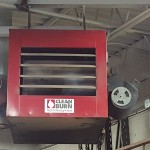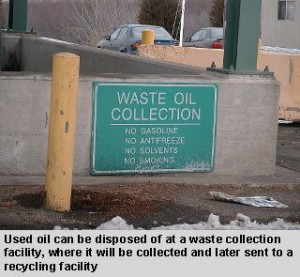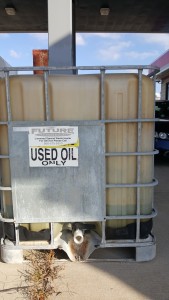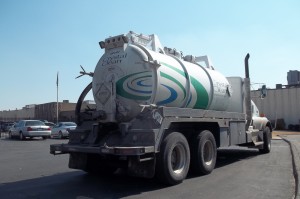Used Oil is defined at 40 CFR 279.1:
Used oil means any oil that has been refined from crude oil, or any synthetic oil, that has been used and as a result of such use is contaminated by physical or chemical impurities.
So a used oil must be:
- Refined from crude oil or synthetic oil…not animal or vegetable.
- Used…as a lubricant, coolant, noncontact heat-transfer fluid, hydraulic fluid, buoyant, or other similar purpose; not unused stock or off-spec material, though spill residue is OK.
And…
- Contaminated with impurities because of its use. Physical impurities include: water, metal shavings, sawdust, or dirt; while examples of chemical impurities include: toxic metals, halogenated or non-halogenated solvents.
The definition of used oil does not include oil-based products used as solvents.
Further, at §279.10(a):
EPA presumes that used oil is to be recycled unless a used oil handler disposes of used oil, or sends used oil for disposal.
This presumption of the EPA means that the regulations of Part 279 apply to a used oil even if it is ultimately sent to final disposal – and not recycling or fuel blending which is clearly the intent of these regulations. The applicable regulations will apply only at the point of disposal.
Even better, a used oil may be managed according to these regulations even if it exhibits a hazardous waste characteristic:
- Ignitablity (D001)
- Corrosivity (D002)
- Reactivity (D003)
- Toxicity (D004 – D043)
Read more about the identification and management of used oil
This information is based on the Federal EPA regulations at 40 CFR 279. Your state may have more strict regulations for its management of used oil. Check with your state environmental agency before using any of these options.
If you have a used oil, what are you going to do with  it?
it?
Accumulate used oil on-site prior to off-site transportation for recycling provided that:
- The used oil is accumulated in tanks (aboveground or underground) or containers only. Tanks and/or containers of used oil are not subject to the regulations for hazardous waste containers or tanks at 40 CFR 265, subpart I & J, respectively
- Tanks and/or containers of used oil are in good condition: no severe rusting, apparent structural defects or deterioration and no visible leaks.
- Aboveground tanks and/or containers of used oil are labeled “used oil”.
- Fill pipes used to transfer used oil into underground storage tanks are labeled “used oil”.
- The generator responds promptly to a release of used oil to the environment, to include:
- Stop the release.
- Contain the released used oil.
- Clean up and manage properly the released used oil and other materials.
- If necessary, repair or replace any leaking used oil storage containers or tanks prior to returning them to service.
But why settle for that when the used oil standard lets you do so much more?
Generators may burn used oil on-site in used oil-fired space heaters provided that:
- The heater burns only used oil that the owner or operator generates or used oil received from household do-it-yourself used oil generators.
- The heater is designed to have a maximum capacity of not more than 0.5 million Btu per hour.
- The combustion gases from the heater are vented outside the building, i.e. “to ambient air”.

Generators may self-transport – without an EPA identification number – small amounts of used oil to approved collection centers provided that:
- The used oil is generated at the generator’s site or collected from household do-it-yourselfers.
- The generator transports the used oil in a vehicle owned by the generator or owned by an employee of the generator.
- The generator transports no more than 55 gallons of used oil at any one time.
And…
- The generator transports the used oil to a used oil collection center that is registered, licensed, permitted, or recognized by a state/county/municipal government to manage used oil.
Household “do-it-yourselfer” used oil means oil that is derived from households, such as used oil generated by individuals who generate used oil through the maintenance of their personal vehicles.
Like this article? Subscribe to my Monthly Newsletter No marketing emails! |
Generators may self-transport – without an EPA identification number – small amounts of used oil to aggregation points owned by the generator provided that:
- The used oil is generated at the generator’s site only, no household do-it-yourselfers.
- The generator transports the used oil in a vehicle owned by the generator or owned by an employee of the generator.
- The generator transports no more than 55 gallons of used oil at any one time.

And…
- The generator transports the used oil to a property that is owned and/or operated by the generator.
Generators may arrange for used oil to be transported by a third party transporter – without an EPA identification number – provided that:
- The used oil is reclaimed under a contractual agreement known as a “tolling arrangement”
- Under the tolling arrangement, reclaimed oil is returned by the processor/re-refiner to the generator for use as a lubricant, cutting oil, or coolant.
- The processor/rerefiner must own and operate the vehicles used to transport the used oil to and from the generator.
- The tolling arrangement must indicate:

In a Tolling Arrangement, the transporter of the used oil & processed/rerefined oil must be the processor/rerefiner - The type of used oil.
- The frequency of shipments.
- Owner and operator of the vehicle used to transport the used oil to the processing/re-refining facility and to deliver recycled used oil back to the generator. As noted above, this must be the processor/rerefiner.
- That reclaimed oil will be returned to the generator.
Contact me with any questions you may have about the generation, identification, management, and disposal of hazardous waste, universal waste, and used oil Daniels Training Services 815.821.1550 |
Mixtures of some hazardous waste and used oil may be managed as a used oil provided that (Part 1):
- Both the used oil and the hazardous waste are from the same generator.
- The hazardous waste exhibits solely the characteristic of Ignitability (D001) before mixing.
- The resulting mixture does not exhibit the characteristic of Ignitability. It is OK, however, if the mixture exhibits other hazardous waste characteristics, i.e. Corrosivity, Reactivity, and/or Toxicity.
- Read more about mixtures of used oil and hazardous waste.
Mixtures of some hazardous waste and used oil may be managed as a used oil provided that (Part 2):
- Both the used oil and the hazardous waste are from the same generator.
- The hazardous waste exhibits any characteristic of a hazardous waste. i.e. Ignitability, Corrosivity, Reactivity, and/or Toxicity.
- The resulting mixture does not exhibit any hazardous waste characteristic.
- Read more about mixtures of used oil and hazardous waste.
Mixtures of some hazardous waste and used oil may be managed as a used oil provided that (Part 3):
- Both the used oil and the hazardous waste are from the same generator.
- The hazardous waste is a listed hazardous waste only because it exhibits the characteristic of Ignitability, Corrosivity, and/or Reactivity (aka: ICR-Only Listed Hazardous Waste).
- The resulting mixture does not exhibit any hazardous waste characteristic.
- Read more about mixtures of used oil and hazardous waste.
Mixtures of some hazardous waste and used oil may be managed as a used oil provided that (Part 4):
- Both the used oil and the hazardous waste are from the same generator.
- The generator is a Conditionally Exempt Small Quantity Generator (CESQG).
- Read more about mixing hazardous waste – included a listed hazardous waste – with used oil at a CESQG.
Not sure of your hazardous waste generator status? |
 Generators may mix used oil and diesel fuel provided that:
Generators may mix used oil and diesel fuel provided that:
- Used oil and diesel fuel are mixed on-site.
- Used oil and diesel fuel are mixed by the generator of the used oil.
- Mixture of used oil and diesel fuel is for use in generator’s own vehicles.
- Prior to mixing, used oil must be managed as a used oil subject to the Standards for Used Oil Generators at 40 CFR 279, Subpart C.
Stated succinctly at 40 CFR 279.10(d), a mixture of used oil and diesel fuel is no longer subject to the used oil regulations after mixing and is essentially the same as product.
(d) Mixtures of used oil with products. (1) Except as provided in paragraph (d)(2) of this section, mixtures of used oil and fuels or other fuel products are subject to regulation as used oil under this part.
(2) Mixtures of used oil and diesel fuel mixed on-site by the generator of the used oil for use in the generator’s own vehicles are not subject to this part once the used oil and diesel fuel have been mixed. Prior to mixing, the used oil is subject to the requirements of subpart C of this part.
While the mixing must take place on-site, their is no indication that the vehicle use is limited to on-site.
The used oil standard provides for several options instead of simple on-site storage and off-site recycling. Again, I caution: This information is based on the Federal EPA regulations at 40 CFR 279. Your state may have more strict regulations for its management of used oil. Check with your state environmental agency before using any of these options.
Daniels Training Services 815.821.1550 |



